Everything for the front! All for victory!
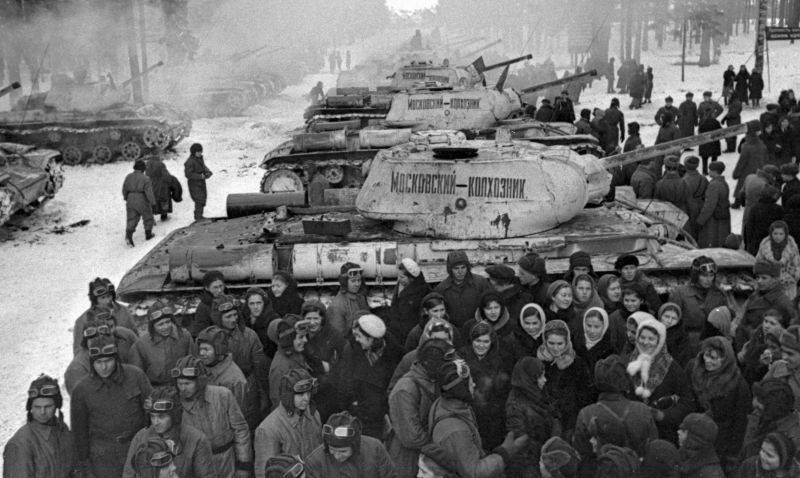
Every sixth plane or tank in the USSR during the years of World War II was built on personal contributions. Soviet society and people not only gave their lives, forces and working hours to the struggle against the dark force of Nazism, but also reinforced the economic opportunities of the state with their last savings.
All for victory!
With the outbreak of World War II, the Soviet leadership and the Communist Party were able to mobilize, raise the whole people to a holy struggle against a terrible enemy, whose victory threatened the entire Union and people with complete destruction. The slogan "Everything for the front! All for victory! ” was mentioned in the directive of the Council of People's Commissars (the government was then called) of June 29, 1941. He was publicly proclaimed by Stalin on July 3, 1941 during a speech by the Soviet leader on the radio.
In the name of the highest and sacred goal - the defense of the Motherland, all the peoples of the Soviet Union rose. A single spiritual impulse increased the material strength of production and weapons. On the initiative of the people at the very beginning of the war, the idea of forming a Defense Fund was born. On July 29, 1941, the newspaper Pravda published a short note, "Workers Offer to Create a Defense Fund." The Defense Fund itself was established on August 1, 1941. In all branches of the USSR State Bank, special accounts were opened to which voluntary contributions were received. People donated their personal savings, royalties and government bonuses, government loan bonds, winnings on loans and lotteries, funds from the sale of crops, from spent Sundays (collective voluntary work on Sunday or other non-working hours), gold, silver and other jewelry, etc. e. Donors refused in favor of the Fund from their payment for donated blood.
The people immediately responded to this idea. So, on July 31, 1941, the staff of the Moscow factory “Red Proletarian” appealed to the people with an appeal until the end of the war to monthly pay one-day earnings to the Defense Fund. On August 3, 1941, the Pravda newspaper reported that a mass Sunday of railway workers had passed, more than 1 million people participated in the event. All earnings, 20 million rubles, were transferred to the Defense Fund.
Funds were raised by the whole world. Workers and office workers, engineers and technicians, teachers and doctors, science and art workers, communists, Komsomol members and believers, clergy, collective farmers and pioneers donated their earnings and savings. The great Russian writer Mikhail Sholokhov became the initiator of the movement among the Soviet intelligentsia. In the very first days of the war, he handed over the Stalin Prize of the first degree in favor of the Foundation - 100 thousand rubles (bread then cost 3 rubles, Shpagin submachine gun, PPSh - 500 rubles). The poets Alexander Twardowski and Vasily Lebedev-Kumach passed Stalin's prizes of the second degree - 50 thousand rubles. The designers Alexander Yakovlev, Vladimir Klimov and Sergey Ilyushin donated their funds to the Fund. In 1942, at the personal expense of Samuil Marshak, Viktor Gusev, Mikhail Kupriyanov, Porfiry Krylov, Nikolai Sokolov (Kukryniksy - the creative team of Soviet graphic artists and painters), and Sergey Mikhalkov built and transferred the Red Army tank KV-1 "Ruthless".
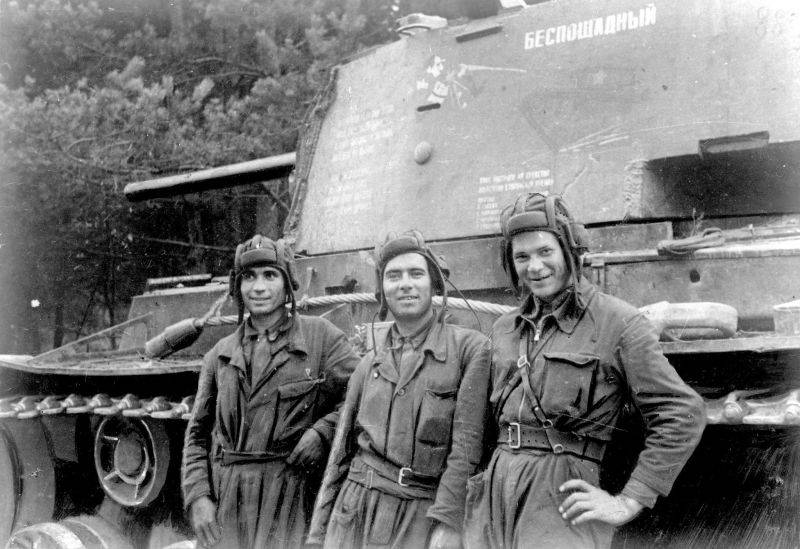
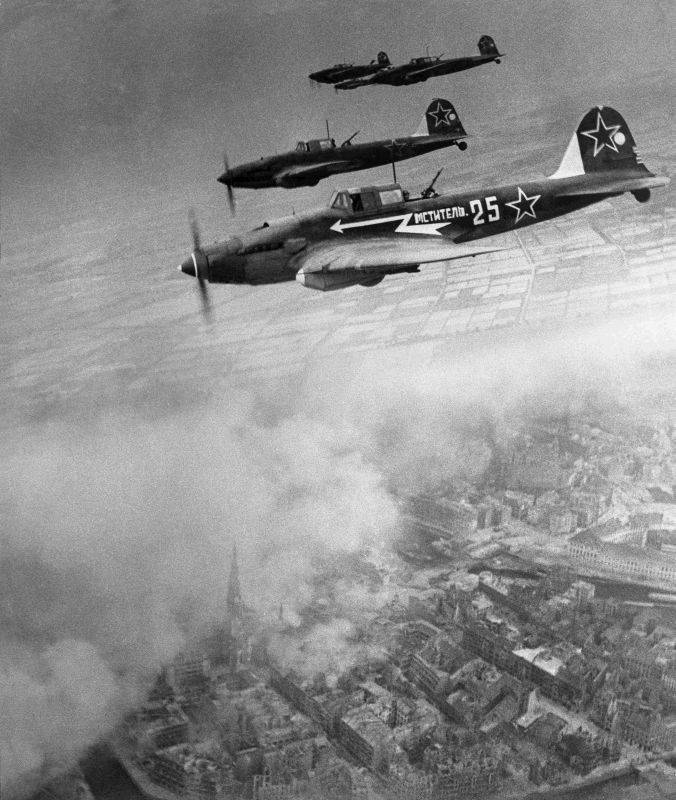
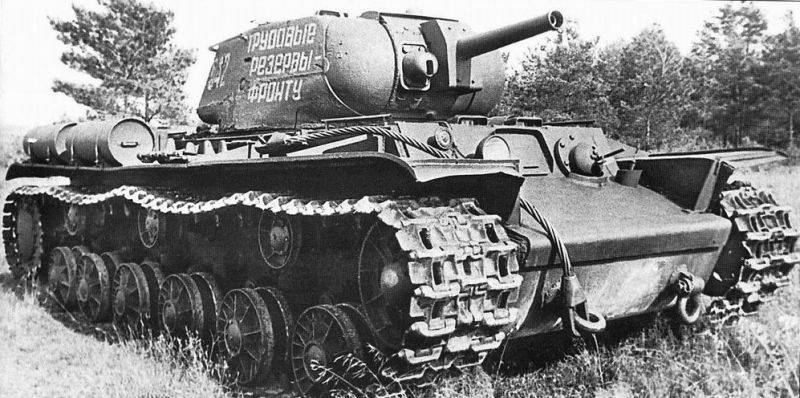
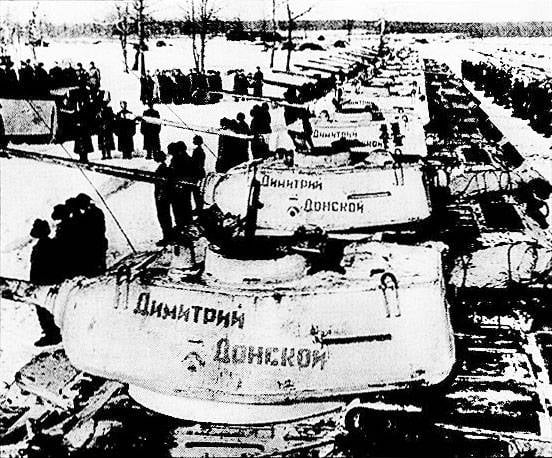
The whole world
Tanks, combat aircraft, torpedo boats, submarines and armored trains were built with folk money. The Soviet peasant collective farmer Ferapont Golovaty, on the sale of honey (it was very expensive), collected 100 thousand rubles and contributed them to the construction of the aircraft. “Everything that I earned with my honest work on the collective farm,” Ferapont wrote in a telegram addressed to Stalin, “I give it to the Red Army ... Let my war machine smash the German invaders, let it bring death to those who mock our innocent brothers Soviet people. Hundreds of squadrons of military aircraft built on the personal savings of collective farmers will help our Red Army quickly clear our sacred land of German invaders. ” It is worth noting that in the family of Golovaty, two of his sons and three sons-in-law went to the front.
In January 1943, the Yak-1 fighter plane with a dedicatory inscription on board to the pilot of the Stalingrad Front Guard Major Eremin from the collective farmer of the collective farm "Stakhanovets" comrade Golovaty "was transferred to the Saratovian Major Boris Eremin (later Lieutenant General aviation, The hero of the USSR). Yeryomin went the battle path from Stalingrad to the Crimea, was never shot down, but after the liberation of Sevastopol the combat vehicle was decommissioned due to its technical condition. The plane was sent to the Saratov Museum of Local Lore. The Golovaty family decided to buy another plane. The amount was collected by the whole family, relatives and close people. In May 1944, the Yak-3 fighter was again handed over to Major Eremin. There was an inscription on the car: "From Ferapont Petrovich Golovaty, 2nd plane to the final rout of the enemy." The combat vehicle passed without damage the final stage of the war. Eremin celebrated Victory Day in Prague.
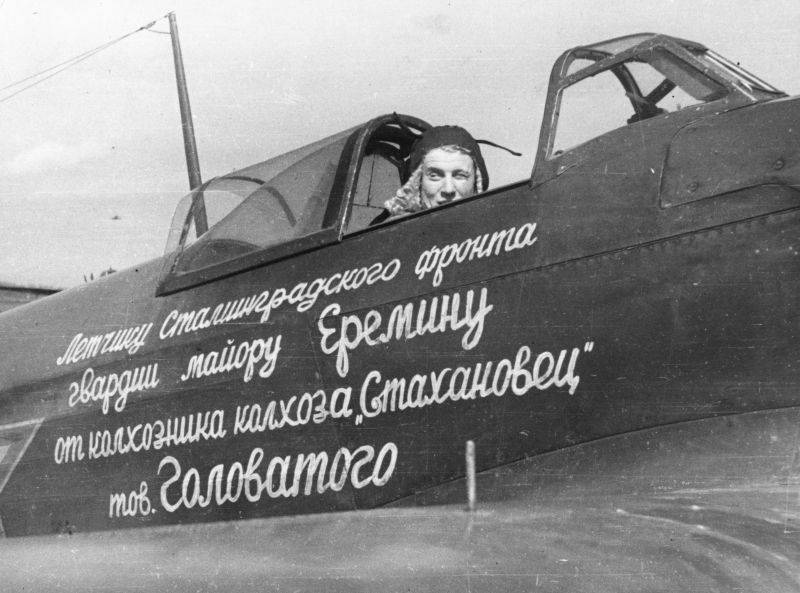
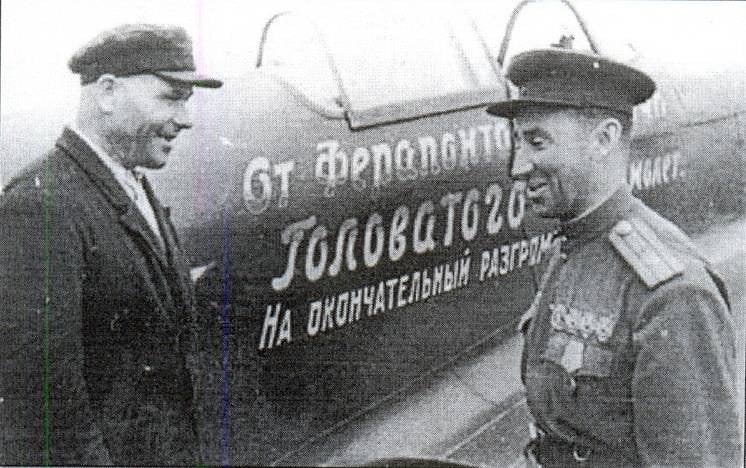
Maria Oktyabrskaya, a tanker soldier, thundered throughout the country. Her husband, the regimental commissar, died in the summer of 1941. Maria began to seek to be sent to the front. However, she was refused: health problems and age (36 years). Then she and her sister sold all the valuables and things and began to engage in embroidery (tablecloths, scarves, napkins, etc. went well in the bazaar). Collected 50 thousand contributed to the construction of the T-34. And she turned to the Supreme Commander-in-Chief Joseph Stalin with a request:
Stalin gave the go-ahead. Maria studied at the Omsk Tank School, became the first woman in the country as a tank driver. Since October 1943, she fought on her tank. In January 1944, in a fierce battle, she was seriously wounded, and went to the heavenly regiment on March 15, 1944. Posthumously - Hero of the Soviet Union.
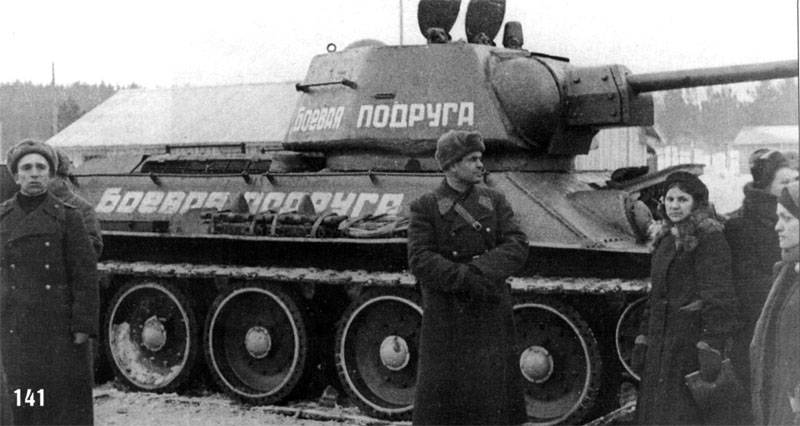
There were many such examples. Individuals and whole collectives sacrificed everything they had to bring victory closer. The Russian clergy, led by Patriarchs Sergius and Alexy, raised over 300 million rubles. With these funds, the Dmitry Donskoy tank column and the Alexander Nevsky air squadron were built. Komsomol members of Altai raised funds for the tank column "Altai Komsomolets", Omsk - "Omsk Komsomolets", Novosibirsk Region - "Novosibirsk Komsomolets", in the Primorsky Territory, the armored train "Primorsky Komsomolets" was built. In 1943, Muscovites raised 400 million rubles for the Moscow aviation compound and the Moscow tank column. At the expense of Komsomol members and youth of Altai in 1943 for the Baltic fleet built five torpedo boats: Altai Komsomolets, Young Altai, Pioneer Altai, Komsomolets Oirotii, Barnaul Komsomolets.
At the expense of the Komsomol members of Irkutsk and the Irkutsk region in 1942 the tank column "Irkutsk Komsomolets" was built. In 1943, a second column was built. In total, 12 million 360 thousand rubles were collected for the construction of tanks in the Irkutsk region. Due to the funds raised by the residents of Tataria, the tank column "Red Tataria" was created. In the summer and autumn of 1942, during the battle of Stalingrad, the staff of the Perm Plant named after F. Dzerzhinsky for personal savings acquired a squadron of Dzerzhinets aircraft, the staff of the Stalin Plant - squadron "Stalinets".
As a result, Soviet citizens in general donated 94,5 billion rubles to their homeland. This is 16% of the direct costs of the war. That is, approximately every sixth plane and tank was built on public contributions.
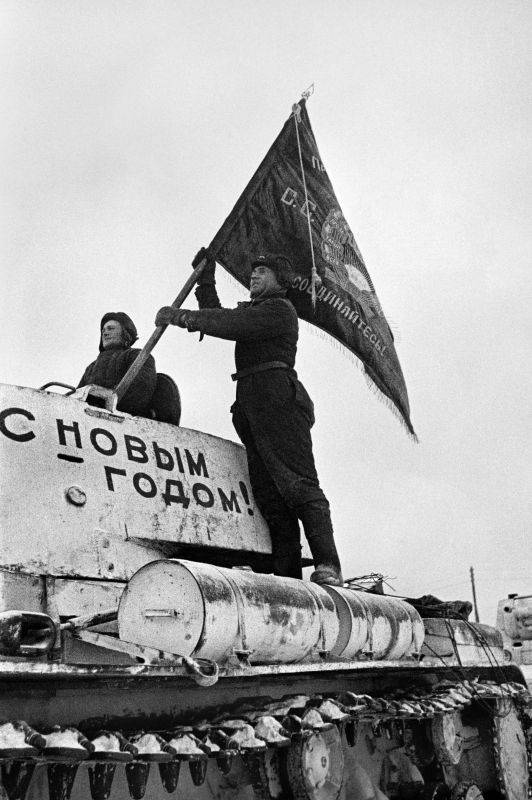
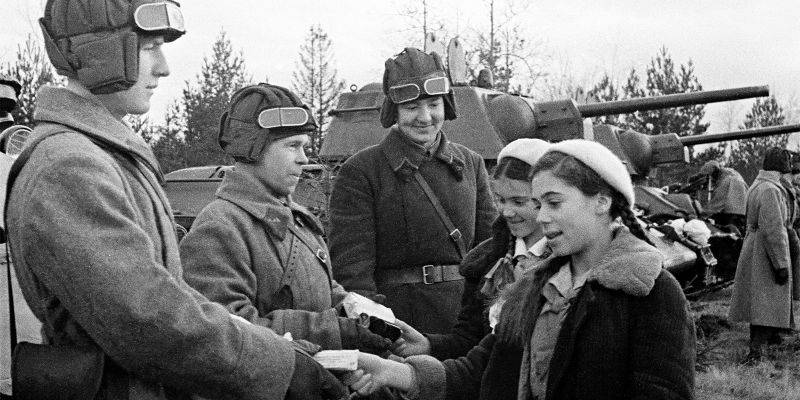
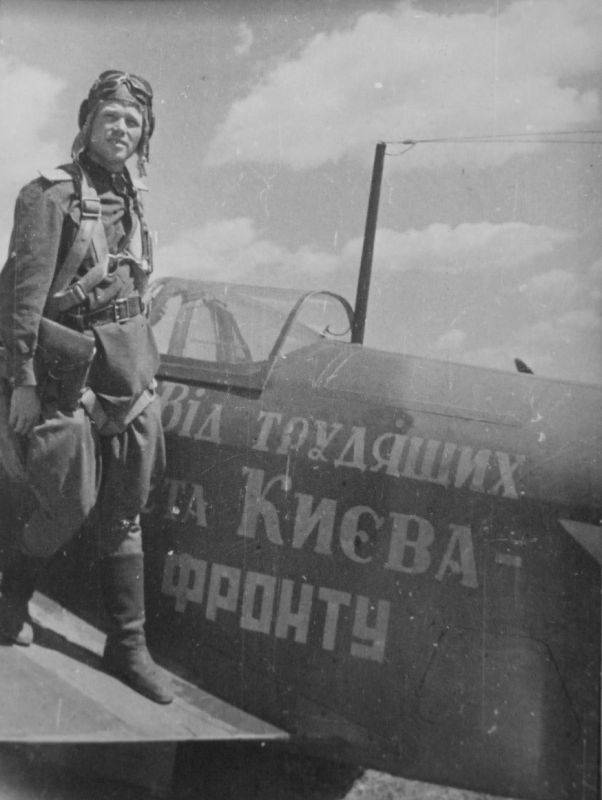
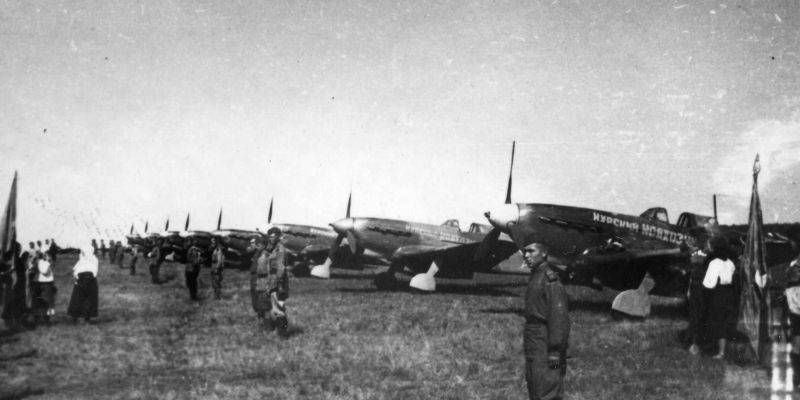
Government war loans
These were not all financial flows. Citizens of the USSR filled up the People's Commissariat of Finance with letters demanding an extension of the subscription to government loans of the third five-year plan. In fact, this loan was the first military loan. 300 million rubles worth of bonds were placed on it in mid-July, in addition to 10,3 billion that were received before the start of the war.
In 1942, the First State Military Loan was issued. Its volume is 10 billion rubles, the repayment term is 20 years. Interestingly, the bonds were placed even in the occupied territory - through the underground and partisans. Hundreds of thousands of rubles came from the occupied territory to the Soviet treasury. The loan replenished the Soviet treasury by more than 13 billion rubles. Then each year one military loan was issued. In June 1943, a decree was issued on the issuance of the Second State War Loan. The amount of the issue amounted to 12 billion rubles. A total of 20,8 billion was collected by subscription. The third state military loan of 1944 was issued in the amount of 25 billion rubles and gave the Soviet treasury 28,9 billion rubles.
The last loan began to be placed in May 1945. The fourth military loan was also allocated for 25 billion rubles and raised 26,7 billion rubles. War bonds were winning. Their repayment and income payments were expected twice a year, the winnings ranged from 200 to 50 thousand rubles. If the bonds did not win, they were redeemed at par. But the main motivation, in contrast to the bonds of the First World War, when it was a profitable investment at 5,5% per annum, was the desire to help their Fatherland. The maturity of the bonds was 20 years, that is, from a financial point of view, their purchase was meaningless. In total, over the years of the war, the treasury using bonds received about 100 billion rubles with a total military expenditures of 586 billion.
Funds were also raised to the budget through monetary and clothing lotteries. In total, four lotteries were held. It was also a contribution to the overall victory. On November 27, 1941, the Soviet government decided to hold the first all-Union monetary and clothing lottery. Tickets worth 10 rubles were issued in the amount of 1 billion rubles. The highest winnings were 10 tickets for 50 thousand rubles, 40 for 25 thousand each. Valuable items were also played: astrakhan ladies coats, fox and fox foxes, carpets, gilt and silver watches, cigarette cases, cuts on men's and ladies' suits, men's and women's shoes, writing instruments, etc. In 1942-1944, three more lotteries were held. In total, during the war years, tickets worth over 13 billion rubles were purchased, of which 10,4 billion were transferred to the army.
In total, with the funds of military loans and lottery tickets (not counting the funds of the Defense Fund), the Soviet Union fought over 220 days out of 1418 days of World War II!
In the Soviet Union there was also a “military tax” introduced in December 1941. This was not an innovation of red Moscow. A similar tax existed in the Moscow kingdom and the Russian Empire - for the maintenance of the army, and then the fleet. During the Great Patriotic War, each adult Soviet citizen annually gave to the treasury from 150 to 600 rubles. In 1942, financial revenues amounted to about 45 billion rubles. In favor of the army was a tax on single and childless citizens. Revenues from commercial trade introduced in 1944 went entirely to the army. Cash flow was limited. People had the right to withdraw from their savings books no more than 200 rubles. State financiers actively raised funds for deposits, this was especially noticeable at the front.
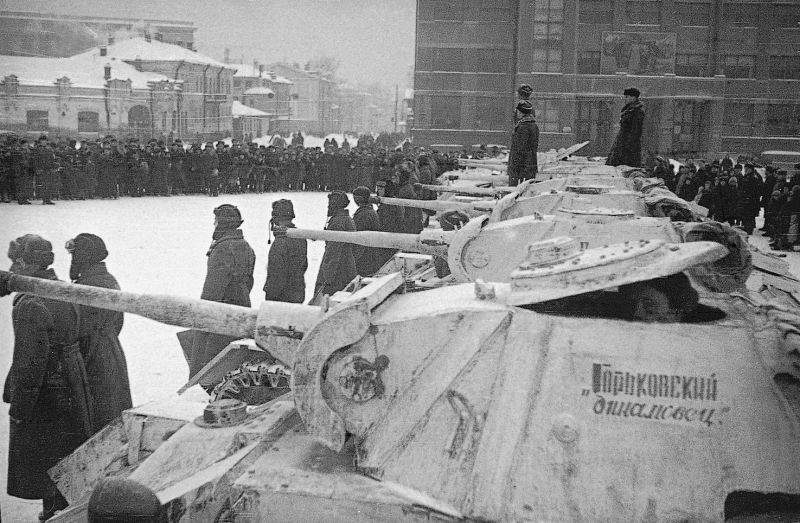
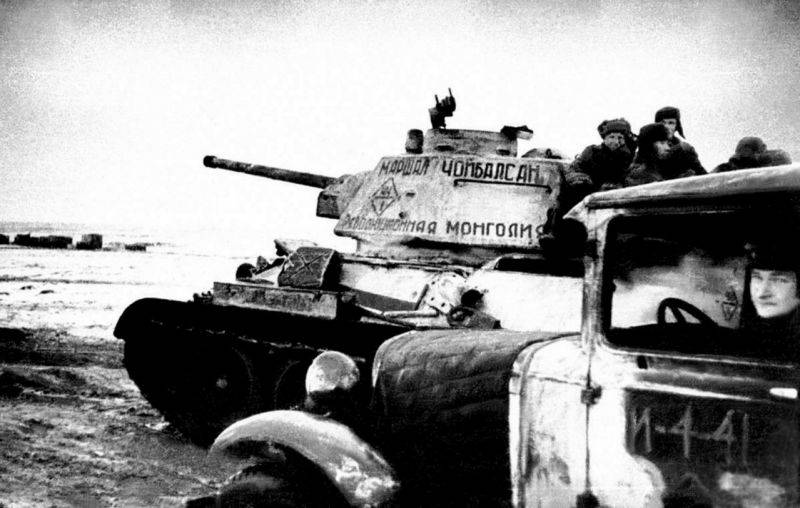
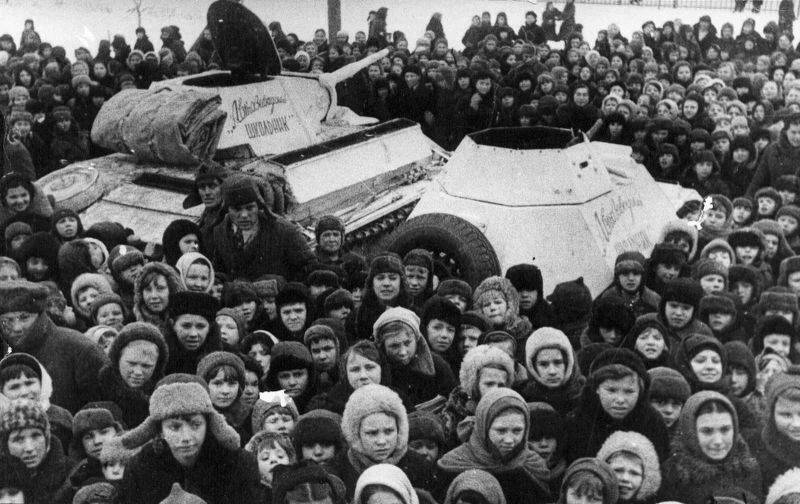
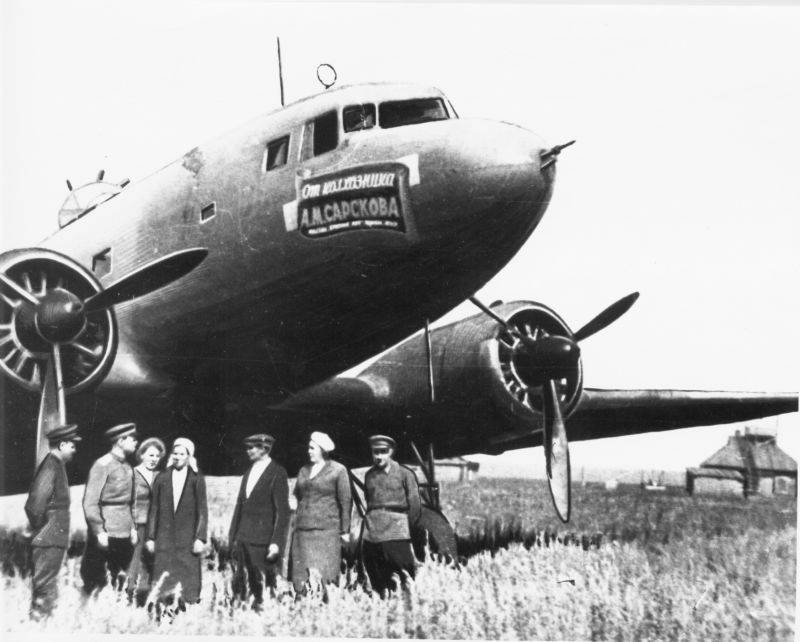
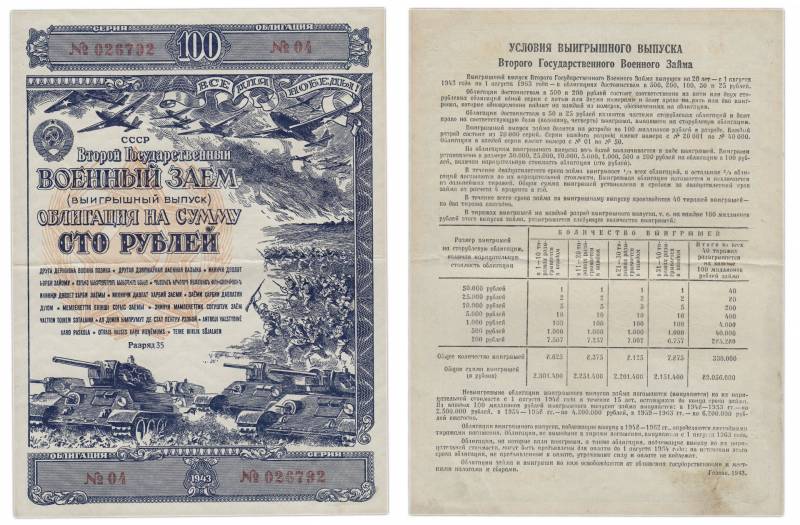
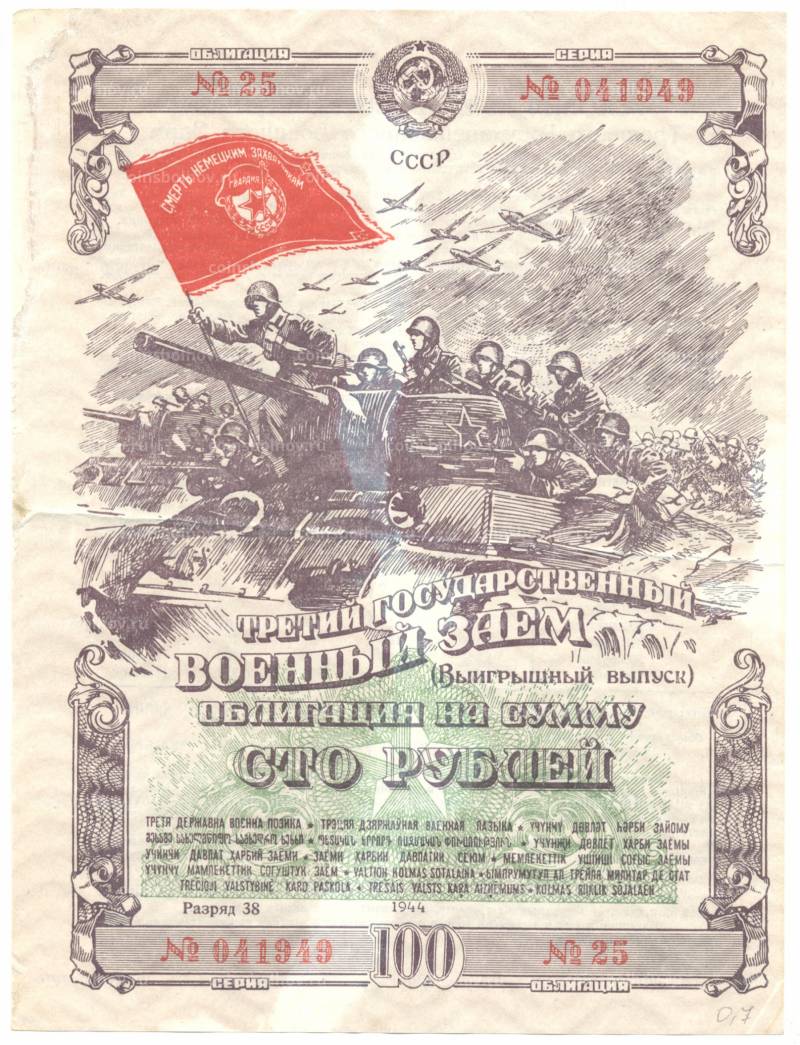
Information